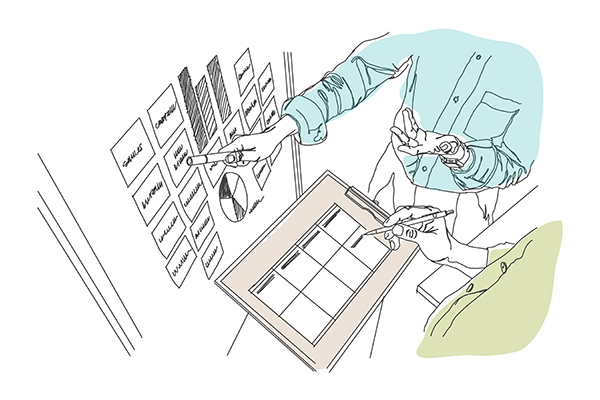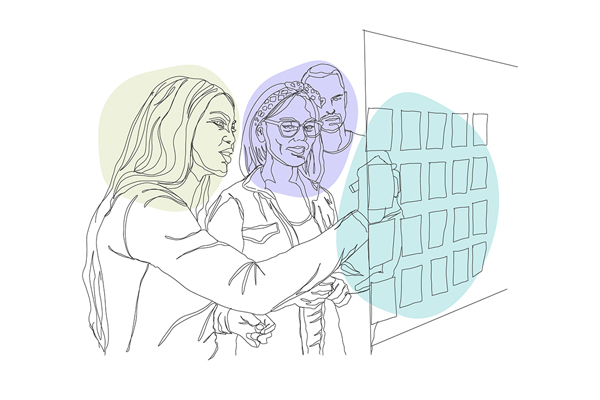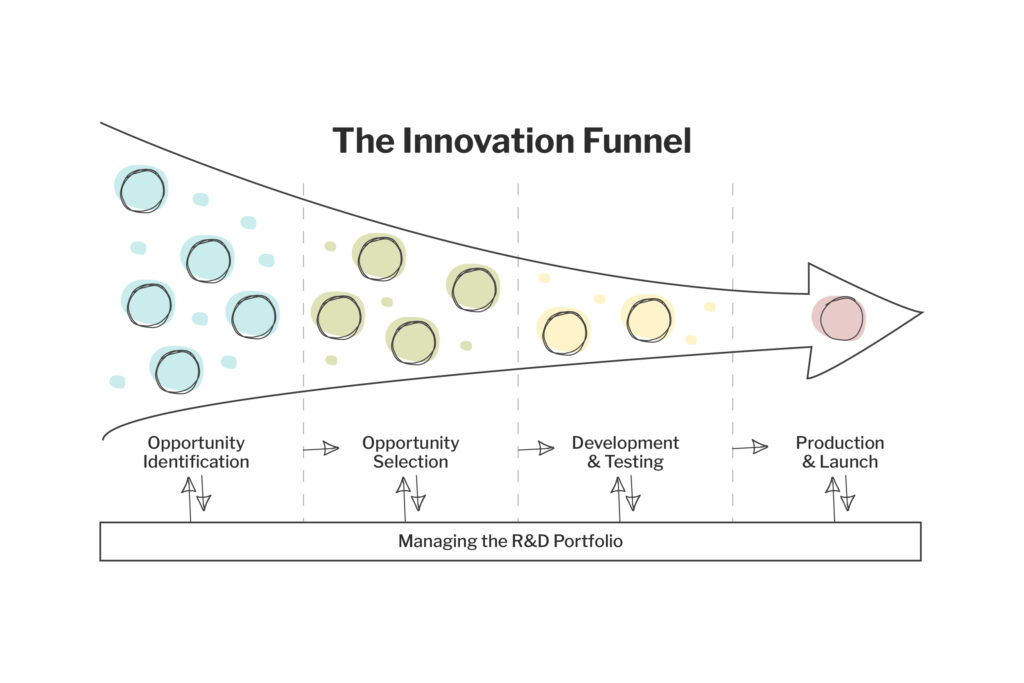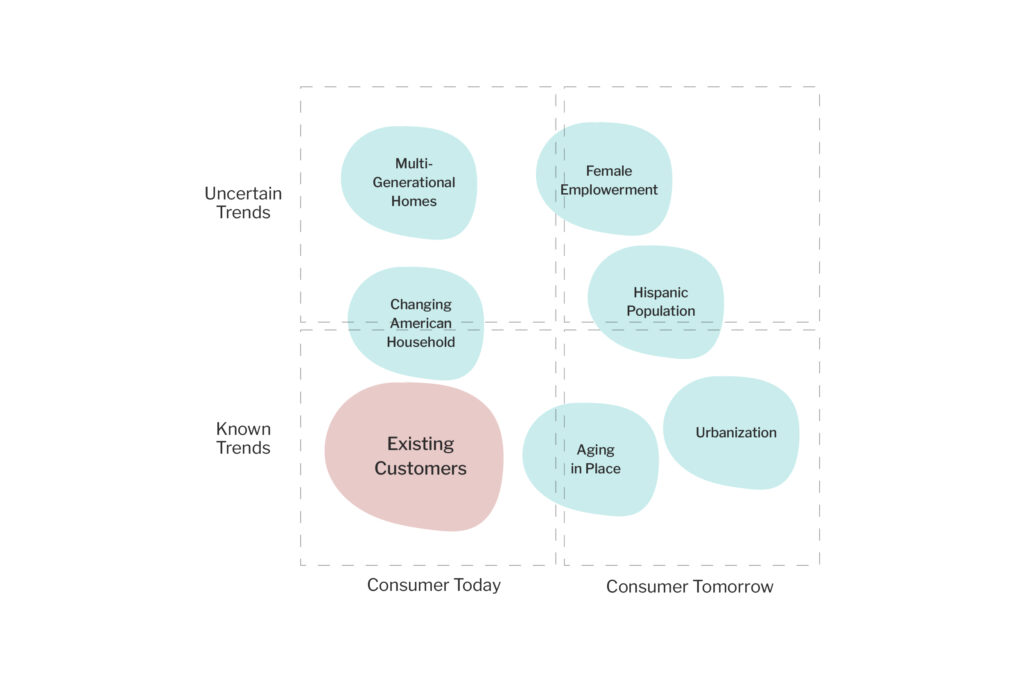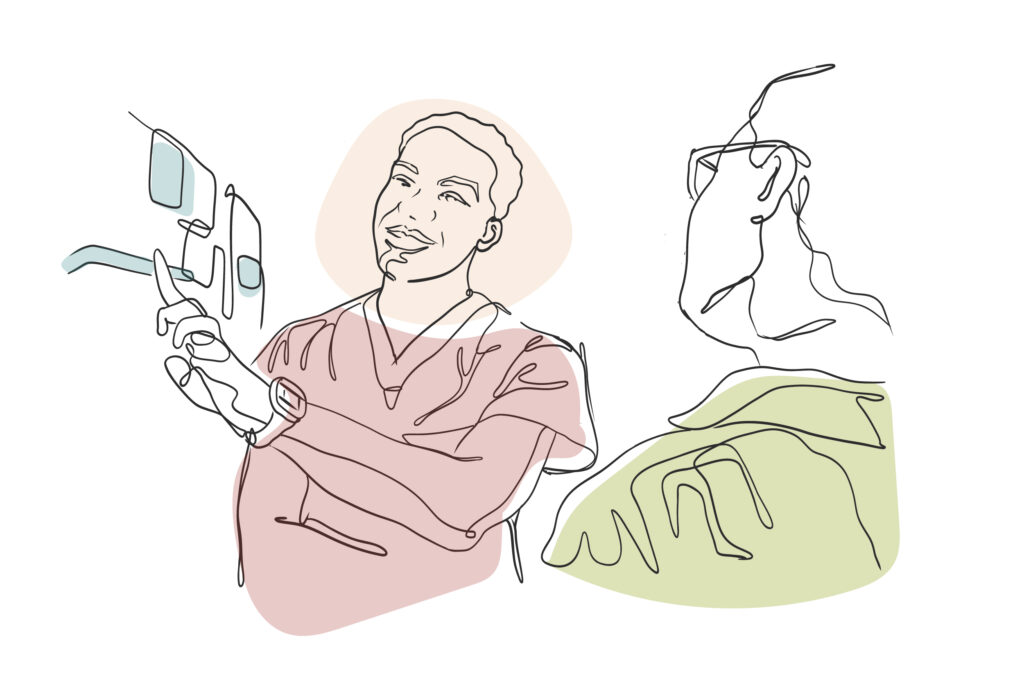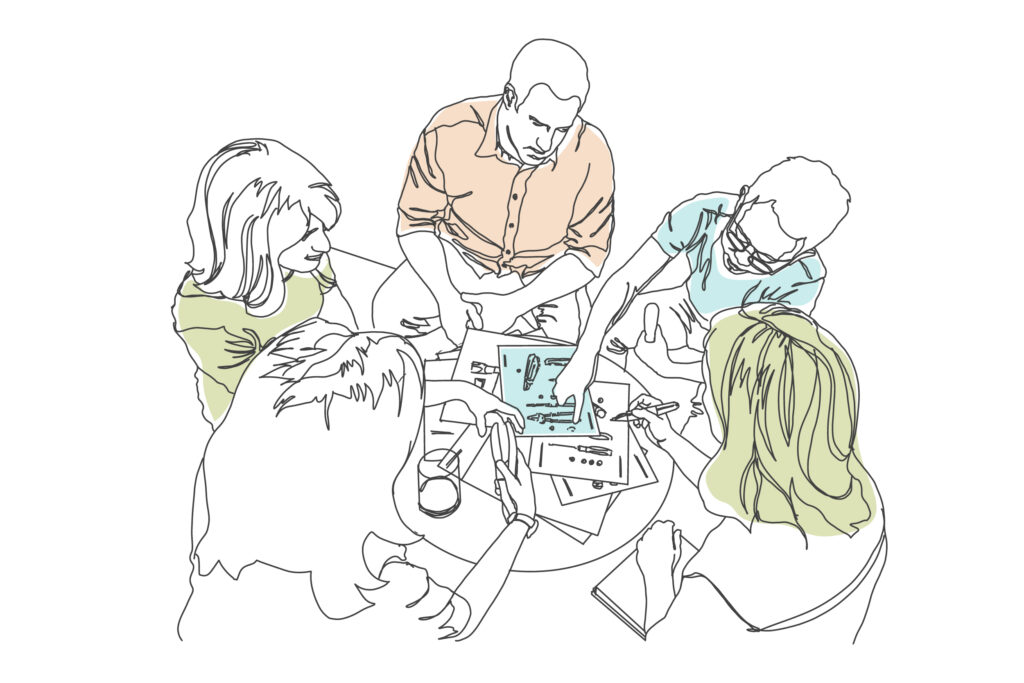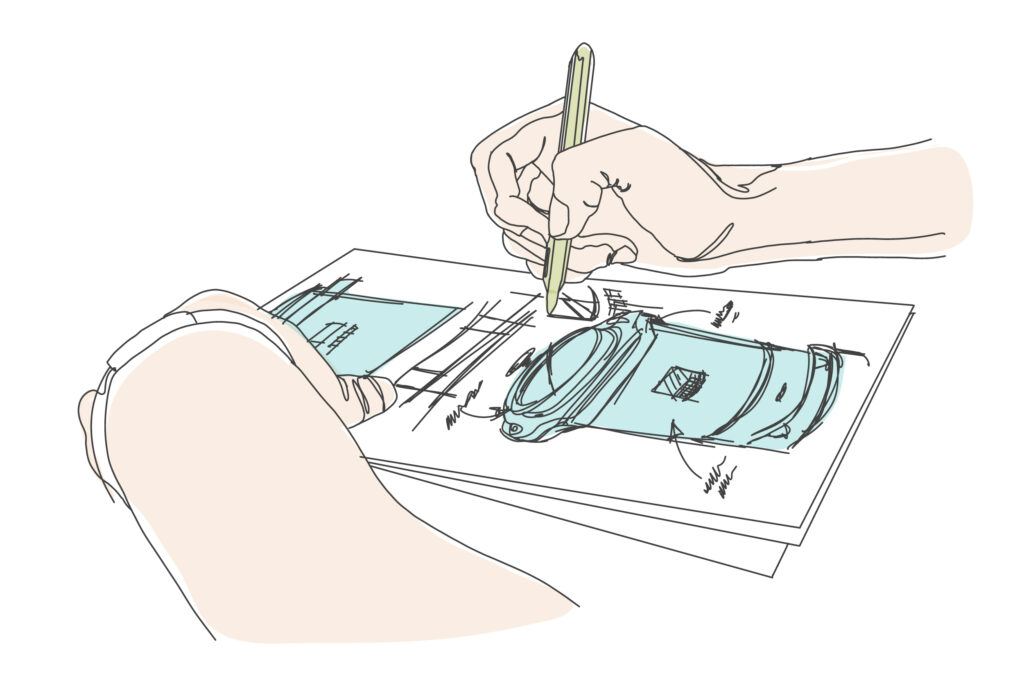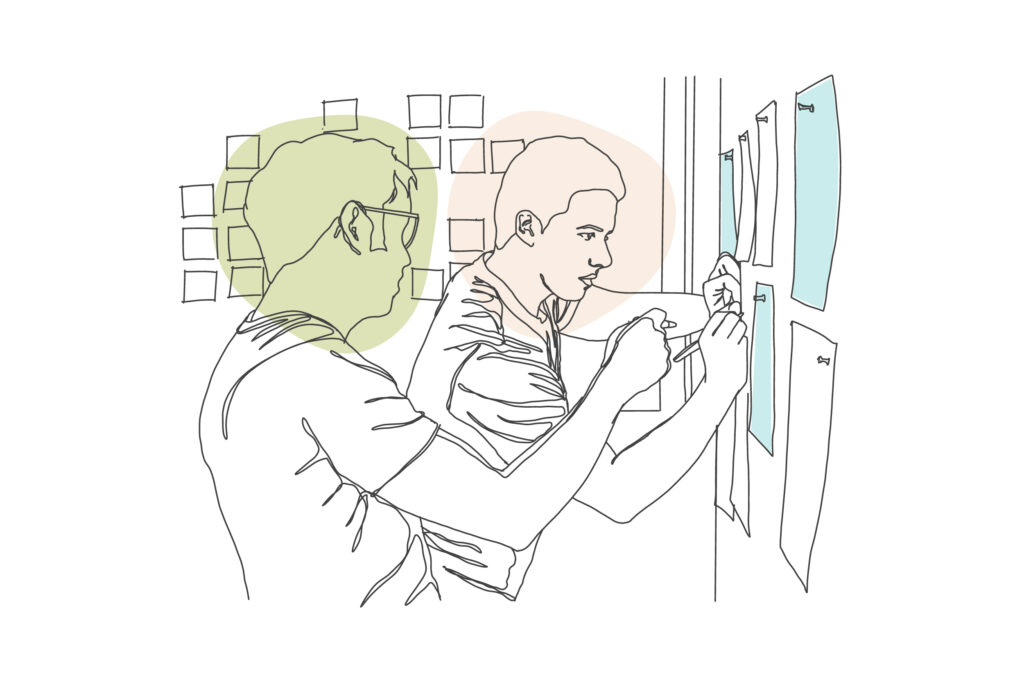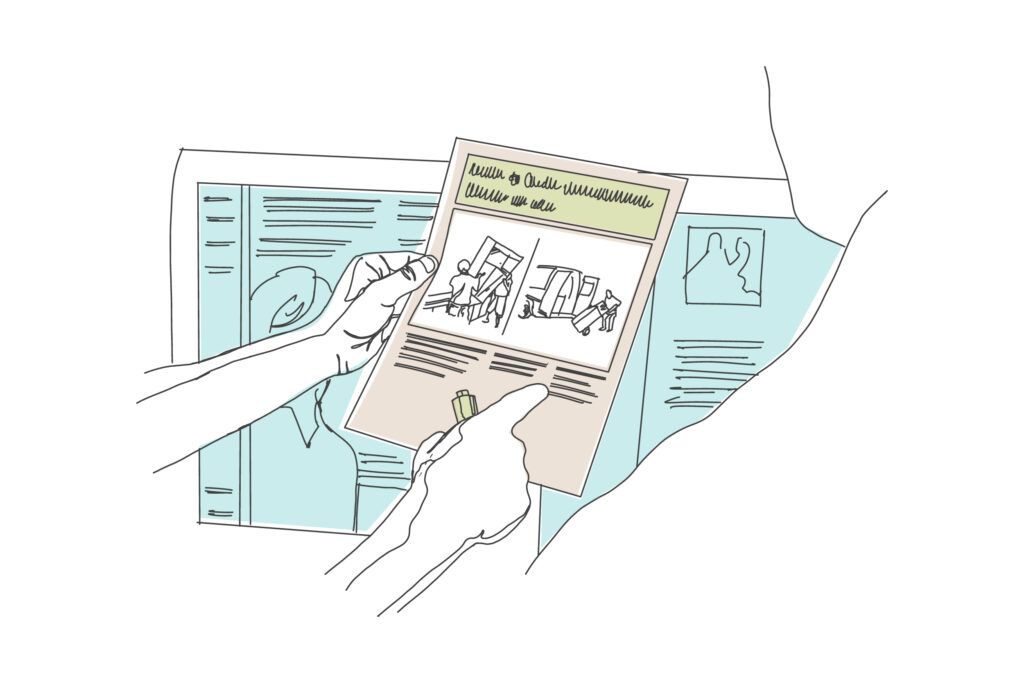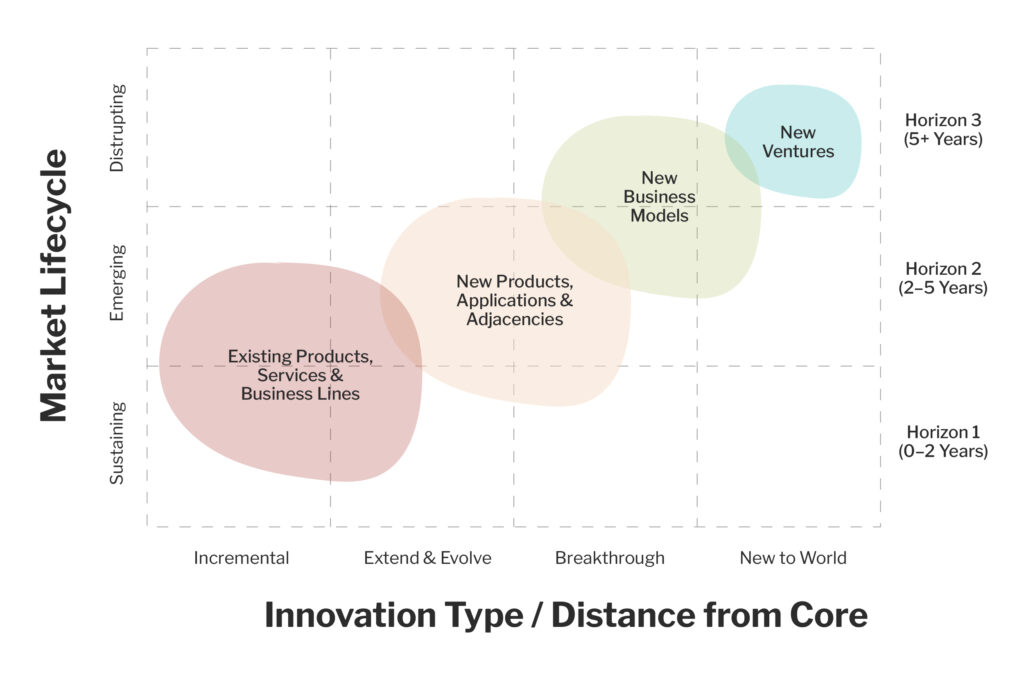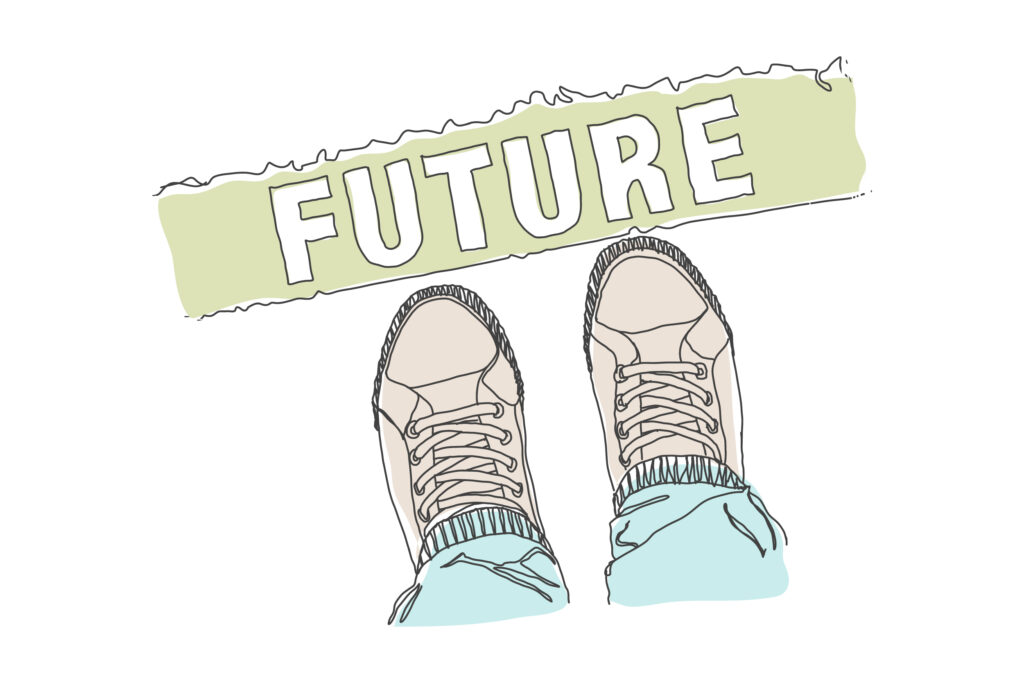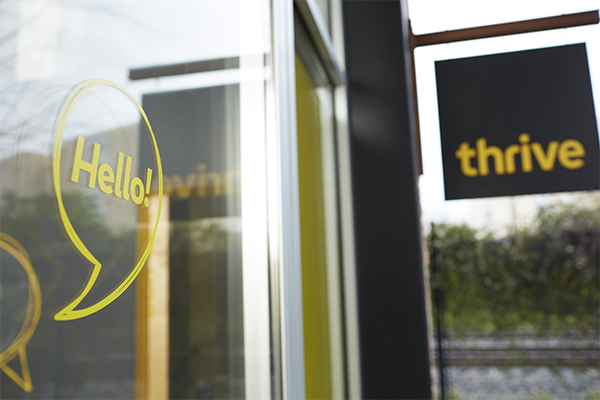Do You Know Your Customers Anymore? How to Use Generative Research to Reset Your Innovation Pipeline.
Generative research is a powerful tool for businesses looking to thrive in a constantly evolving world. Its ability to anticipate market shifts by tapping into real-world societal and cultural trends and developing a deep understanding of emerging consumer behaviors gives companies an edge in designing new products and services. This article presents a process for integrating generative research into your strategic planning, highlighting practical methodologies and actionable tips to revitalize your product development strategies and reset your innovation pipeline.
______
Understanding consumers’ shifting needs and preferences becomes crucial as businesses strive to stay ahead. The modern consumer requires continuous discovery and a deeper level of understanding, where the goal is to anticipate latent needs before your competition does. Generative research can rejuvenate your innovation pipeline and deeply connect your brand with existing and future customers. It uncovers what they desire in a future experience and how changing socio-economic and cultural trends influence their needs, motivations, and behaviors.
The Challenge Ahead for Corporate Leaders.
“Some companies ask what people want. Market leaders know what customers want before they know it themselves.” — Gary Hamel and C.K. Prahalad.
The COVID-19 pandemic had a profound psychological and behavioral impact on people worldwide. Consumer purchase behaviors changed significantly, and businesses across the globe now face the daunting task of navigating slowed growth in their core markets. Like other disruptive events, the pandemic catalyzed change, forcing behaviors and trends into new territories. Historical moments such as 9-11 and the Great Recession reshaped societal needs and perspectives on connection, ownership, and possession. Similarly, the pandemic has rewritten the playbook on consumer and business behaviors, heralding changes that promise to stretch well into 2024 and beyond.
With longstanding habits interrupted, accelerated, or entirely reversed, the pandemic era has ushered in a new breed of consumers. These individuals have embraced new worldviews and lifestyles, challenging the notion that businesses still genuinely understand their customers. In this era of perpetual change and evolution, the question looms large: Do we really know our customers anymore?
What is Generative Research?
Unlike traditional market research methods like evaluative research that focus on quantitative data or surface-level observations, generative research (also known as exploratory research, discovery research, foundational research, or problem space research) immerses you in the world of your target consumer (or end-user) to uncover insights that provide a specific understanding of people’s values, motivations, needs, and experiences in the context of their everyday lives. This real-time research allows for a richer, more detailed exploration of the dynamics that govern daily existence, moving beyond mere facts to capture the essence of human experiences.
Customer data (and lots of it) is touted as the key to unlocking market success, but it’s crucial to recognize that not all data is created equal. Generative research differentiates itself as a research methodology by generating data that informs product and service design through rich qualitative insights that uncover the underlying forces shaping consumer preferences and behavior by answering the critical question: Why do people behave the way they do?
How Does Generative Research Help Us to Design Growth?
Generative research plays a crucial role in innovation and product development, offering a rigorous and strategic approach that sets it apart from traditional market research methodologies. It’s a future-forward approach that helps companies engage with their future consumer and innovate at an industry or category level to build future-proof brands. Consumers change, their behavior shifts, and new patterns and trends emerge in their own right. Generative research is the strategic tool you need to measure, monitor, and profit from them. The goal of generative research is simple yet profound:
– Prioritize the trends that matter most and understand people’s behavior on their terms, not yours
– Locate new pockets of growth by capturing how people live today and how they aspire to live tomorrow
– Plot the strategic direction you need to take to realize long-term growth opportunities
– Quickly capture demand to win new customers and reinforce the trust and loyalty of existing ones
– Mitigate the inherent risk and doubt in new product and service development
The Benefits of Generative Research
STRATEGIC
– Drives holistic people-centric innovation to achieve a higher innovation hit rate
– Deepens engagement and elevates loyalty by deeply understanding the consumer and developing hyper-relevant positioning
– Delivers sharp, early, fact-based product and service definitions before development begins
– Identifies the essential capabilities required to future-proof your organization
CULTURAL
– Promotes an outside-in approach to product and service development in R&D, Product Development, Marketing, Marcom, Sales & Services
– Develops a shared understanding of the target audience across the organization, promoting cross-functional cooperation
– Creates a base of knowledge with residual value, informing category planning and navigation
– Fosters a culture of foresight and planning beyond the day-to-day business-as-usual thinking
FINANCIAL
– Creates bigger ideas that generate more value and drive organic growth
– Increases speed to market by making clear brand targets and positioning choices from the start
– Mitigates the risk of failed product launches by uncovering valuable insights and validating them as value propositions early in the product development process
How to Conduct Generative Research to Build A Robust Innovation Pipeline
One of my favorite client quotes was from an executive at a CPG company who told me, “We don’t have an innovation pipeline; we have a straw — help us!”
This candid acknowledgment highlights the predicament of many organizations transitioning from a narrow, linear approach to innovation to a more expansive, dynamic, matrixed one. Resetting the innovation pipeline is about understanding people’s needs, aspirations, and the sociocultural influences that shape their motivations and behaviors and exploring potential futures.
At THRIVE, we approach this transformation through a structured methodology that combines strategic foresight, business factors, and social science in a four-step strategic futures process. Our focus is illuminating new human truths in the form of actionable insights to fuel human-centered design innovation. We categorize these new human truths as macro-level and micro-level insights obtained through trend analysis and the collection of in-person, in-depth insights into people’s lives.
Macro insights define the “problems worth solving.” They will help you to identify thematic opportunities such as trends, barriers, and enablers to adoption.
Micro insights tell you if you’re “solving the problem right.” They will help you to understand the nuances of more granular behaviors, customer needs, specific pain points within a customer journey, or reactions to potential solutions.
For example, imagine if we are researching the process of kitchen renovation and take a macro view of the endeavor at the category level; we might look at the ambiance consumers want to create in their kitchens from a thematic perspective and gain actionable insight into themes driving the next generation of kitchen design (eco-friendly living, minimalism, indoor farming, etc.) and identify the white space growth opportunities at the intersection of consumer motivation, cultural meaning, and market momentum. Understanding users from a macro perspective can be the first port of call if you need an inspirational foundation for new-to-the-world innovations.
We would then take a micro view related to kitchen renovation; we might look at the specific interactions people have with a single appliance or a piece of furniture and how those objects serve (or don’t serve) their needs and lifestyle so that we can inform new human-centered product design. In this way, micro-actionable insights can be powerful tools to ideate new product ideas, features, and functionality — so they stand out in a crowded market or drive into a new, previously untapped niche.
Using both techniques, the generative research process operates at two very different levels, and their integration assists organizations in describing the “who,” “what,” “when,” and the “why” for future innovations.
STEP 1: Turn Empathy into Perspective.
OBJECTIVE: Understand the macro forces of change at an industry and category level and develop a deep understanding of people and how they make sense of their world.
Analyze the Drivers of Change
Macrotrends provide you with a long view of how consumers are likely to respond to the global drivers of change that rise slowly and have a cross-industry impact on the business landscape in the long term, typically 10-15 years. They provide insight into the significant shifts in consumer and user behavior and represent the value shifts from emerging attitudes and behavior among people globally. They help you identify thematic opportunities in an industry or category and show you how to use them to your advantage.
At THRIVE, we typically conduct a macro trend analysis in the form of a STEEP (Social, Political, Economic, Social, and Technology) to show the prevailing forces of change. Whereas an ethnographic research project may provide an intimate study of the state of a single household, business, or person, a STEEP analysis at the macro level reveals the more significant emerging forces that can shape an entire industry or category. In our kitchen renovation example, Urbanization, Multi-Generational, and Sustainable Living are all forces that can dramatically influence an individual’s choices and impact the strategic direction for future products and services.
Identify Your Target Audience
Once you have identified and prioritized the trends that matter most to your industry and category, it’s time to define the type of participants you’ll need to understand as humans to uncover the micro insights that will guide you in solving the problem.
In a generative research initiative, recruiting against emerging macro trends is crucial. To understand your business’s high-priority opportunity and risk areas, you must eschew the segmentation and thinking that got you to where you are today. You must look more expansively than your current business reality to establish new future-oriented points of view that help fuel, guide, and inspire innovation and your strategic plan. A good generative research study is all about the people, ensuring the right mix of participants that represent where you want to go as a company and an industry. Here are a few questions we use to frame up our strategic targets. It’s helpful to consider:
– Who are the people who will most likely shed light on the burning questions your industry is facing?
– Is it somebody who uses certain products or acts a certain way?
– Is it somebody who changes or impacts how others act?
– Are they people who live in a particular environment, culture, or geographic location?
Understand People in Context
How organizations think, talk about, and engage with people directly impacts their ability to be innovative. At THRIVE, we believe people are more than a collection of consumption patterns and archetypes; they’re humans first, with all their complexities, quirks, routines, repertoires, and rituals. We engage all our study participants as real people, immersing ourselves in their natural environment to understand their daily lives, what drives them, and how their priorities are changing, and—as a result—we connect with them empathetically on an emotional level.
Our field studies use an Ethnographic research methodology to understand people’s values, needs, and experiences. Ethnography is one of the most powerful generative research methods for understanding consumer behavior and how they feel about the existing products and services they buy and use. A traditional social science technique (used by anthropologists and sociologists) that seeks to describe and explain the worlds of the people it studies in the most detailed and empathetic terms possible. Meaningful and disruptive insights don’t come quickly. The process involves slowing down, taking everything in—using all five senses—and being passionately curious to understand people’s pain points, desires, and expectations.
STEP 2: Turn Perspective into Insight.
OBJECTIVE: Translate consumer behavior patterns into disruptive insight by abstracting existing habits and practices and transforming them into actionable tools for ideation.
Uncover Disruptive Insights
You can’t disrupt a market without disrupting your thinking first, and that is why insight definition is the most challenging part of generative research. You must get beyond the obvious insights derived from casual observation and develop a deep contextual and cultural understanding of your target population. Disruptive insights are those hard-to-find diamonds in the rough that deliver one or all of the following elements:
– An unrecognized fundamental human truth that reveals the inner nature of things.
– A new way of viewing the world causes us to reexamine existing conventions and challenge the status quo.
– A penetrating observation of human behavior that results in seeing consumers from a fresh perspective.
– A discovery about the underlying motivations that drive people’s actions.
It’s essential to make your disruptive insights actionable for all the stakeholders in the organization. Develop crisp, actionable insight statements coupled with compelling storytelling and information design to communicate the value of the insight and the possibility it holds for creating something unique and groundbreaking. A research report or canvas where information is presented in a strong narrative and a visually compelling way is more likely to intrigue, inspire, and engage. Your team should be able to tell the story of your research findings to multiple audiences with a clear set of “aha’s!” equipping stakeholders with the needed fuel for ideation in the form of insight statements, personas, creative springboards, and design principles.
STEP 3: Turn Insight into Ideas.
OBJECTIVE: Choose the value to deliver to the market by developing a set of value propositions that have the potential to connect emotionally with consumers, build advocacy, and engender loyalty for your brand.
Ideate with Purpose
Ideation can be a tricky beast, and it is often where your innovation efforts can start to go off track. There are a lot of myths and snake oil surrounding the ideation process. But if you want to routinize it in your organization with scaleable and repeatable results, you must treat it as a process with deliberate inputs and outputs to achieve consistent and measurable results. That may seem like a creativity killer, but it’s not; you are just providing the right fuel to ideate against in a way that can predictably deliver value. You can get a group of your most creative people in a room with a problem statement, some Post-it notes, fidget toys, a bowl of M&M’s, and free associate, painting the walls with sketches and diagrams and generating hundreds of ideas. However, only a few likely will have the legs for further development. Like many things in innovation, the devil is in the details, and the inputs must be correct to get anything meaningful out at the other end. It’s a case of garbage in, garbage out.
So, how do you prime the pump for ideation?
At THRIVE, we use a few different tools to ideate successfully and turn generative research into new value. Having actionable insights is the most important input. We frame these as “How Might We?” statements, a demand for action, and an open invitation to dream, ponder, and consider new thinking and future possibilities. We couple these statements with detailed personas of the target customer. It’s essential to ideate with the customer and end-user in mind; it keeps you honest, with the market needs in sharp focus. To get the creative juices flowing and activate the more visual thinkers among us, we develop “Creative Springboards.” Tabloid sheets of visual stimulus (in design, we call these mood boards or inspiration plates) that hint at a potential narrative for the “How Might We?” statements. By triangulating between these three tools, you increase the likelihood of developing ideas that solve a latent need and have strong market potential.
To reset the innovation pipeline through generative research, we run our ideation workshops across two to three days. This amount of time may sound overkill initially, but there is a method to our madness!
DAY 1: Generative Ideation
The generation of an expansive range of ideas for solving the “How Might We?” statements. The result is an extensive portfolio of ideas that we call “point ideas” that can then be developed into fully formed user experiences and value propositions by day 3 of the process. Keep the brainstorming sessions short to ensure everyone remains engaged and creative juices don’t dry up. We use 40-minute sprints with pin-up and review sessions immediately afterward to share ideas and thinking. Use small teams with diverse perspectives and skill sets to help you ideate beyond standard thinking patterns and biases.
DAY 2: Concept Solution Building
The second day is prioritizing and systemizing the high-potential “point ideas.” It’s the beginning of architecting concept solutions that can deliver value to consumers. Expect to shed many of your ideas and concepts here. You need to be ruthless, only progressing those that answer your research questions and have the potential to deliver on the latent needs of consumers. Start to develop rough storyboards and slice-of-life scenarios that combine your point ideas into more robust experiences and ecosystems.
DAY 3: Value Proposition Definition
Day 3 is the culmination of all the work generated in the first two days, and when we typically synthesize all the ideation data and begin to develop preliminary value propositions. The process takes the initial concepts to the next level, creating storyboards and business canvasses of the envisioned products and services in broad strokes. A typical value proposition will include:
– A storyboard of the product or service proposition.
– The driving functional, emotional, and social benefits that the proposition will provide and how they are linked logically to a core idea.
– A description of how the envisioned proposition achieves significant differentiation over incumbent products, i.e., strong/superior features underpinning the key benefits.
– A “Discriminator” statement – the one critical, compelling, and competitive reason for the target group to choose the product or service.
Validate Your Value Propositions
Validating your value propositions quantitively turns human understanding into a meaningful business advantage, which is crucial for developing products and services that align with customers’ latent needs and desires. Testing value propositions to validate their feasibility, desirability, and viability and assess their potential impact on the market is critical for making informed decisions before moving ahead with more expensive product development. You need to ensure you are placing your bets on validated solutions positioned for long-term success. In today’s fast-paced world, it’s more important than ever to involve consumers in the product development process as co-creators with constant customer input and feedback to develop solutions that truly matter.
STEP 4: Turn Ideas into Strategy.
OBJECTIVE: Create a strategic road map detailing the resources, capacities, relationships, and actions required to develop and bring new product and service innovation to market.
Develop the Roadmap
Once you have validated your value propositions with your respective target audiences, it’s time to start working on bridging the gap between vision and execution. That’s where a strategic roadmap comes in. You should begin with revisiting your value propositions based on the feedback from your validation study, refining and ensuring they contain all the data to decide where a particular value proposition should be positioned on your roadmap. At THRIVE, we develop value propositions with the following elements to inform effective decision-making:
– A statement of the value the product or service delivers
– The insight(s) driving the value proposition
– User segmentation/positioning
– The proposed channel and opportunity area
– A compelling business rationale with the size of the opportunity ($)
– A set of product or service features and benefits
– User and technical criteria
We typically map our value propositions against three defined time horizons to help stage new product development and aid planning and execution. Not every value proposition will be a new-to-world idea, and it’s healthy that all your ideas and concepts are not. You’ll likely need to step the market into new groundbreaking products and services at some level for them to be successful. Developing a network of options is more likely to increase your chance of innovation success. Here are four questions that can help guide the development of your roadmap and effective execution and ensure every step aligns with a company’s high-level vision.
– What capabilities do we need to invest in to deliver the value proposition?
– What will we have to do to bridge the capability gaps?
– How can we logically group the value propositions for execution?
– What order should the initiatives be delivered in?
STEP INTO YOUR FUTURE
Generative research presents an exceptional opportunity for businesses to respond quickly and effectively to a fast-paced, ever-changing world. By adopting this approach, your business will be able to anticipate market shifts, deeply understand emerging consumer behaviors, and design innovative products and services that meet your customers’ shifting priorities and needs. Generative research lays the foundation for a dynamic, future-proof business that thrives on innovation, continuously fueling your product development strategies and resetting your innovation pipeline.
Take action today and incorporate generative research into your strategic planning. This powerful process offers an insightful understanding of your existing and future customers and enables you to understand and prioritize emerging trends, discover new growth opportunities, and significantly reduce the risks associated with new product and service development. Invest in generative research to stay ahead of the curve, create a future-proof brand, drive innovation, and catalyze your long-term growth.
Contact us today to reconnect with your customers, revitalize your innovation pipeline, and revolutionize your product development process.
_________________________________________________________________
PEOPLE ALSO ASK THESE QUESTIONS ABOUT GENERATIVE RESEARCH
Q. What is Generative Research?
A. Generative research, also known as exploratory, discovery, foundational, or problem space research, immerses you in the world of your target consumer to uncover insights that provide a specific understanding of people’s values, motivations, needs, and experiences in the context of their everyday lives.
Q. What is the difference between generative and evaluative research?
A. Generative research helps define the problem you want to create and design a solution for. On the other hand, evaluative research helps evaluate and understand an existing design or solution.
Q. How does generative research help us design for growth?
A. Generative research plays a crucial role in innovation and product development. It offers a rigorous and strategic approach that sets it apart from traditional market research methodologies. It helps companies engage with their future consumers to build future-proof brands and innovate in their industry or category.
Q. What are the benefits of generative research?
A. Generative research offers strategic, cultural, and financial benefits. It drives holistic people-centric innovation, deepens consumer engagement, delivers sharp product and service definitions, promotes an outside-in approach, creates a shared understanding, and creates bigger ideas.
Q. How does generative research mitigate risks in product and service development?
A. By delivering rich, qualitative data and early validation of value propositions, generative research helps mitigate the risk of unsuccessful product launches and ensures the development of consumer-centric solutions.
_________________________________________________________________
Ready to Reconnect With Your Customers And Drive Innovation?
Please submit an inquiry using the below form. A member of our team will contact you shortly.
_______________________________________
ABOUT THRIVE
THRIVE is a strategic design firm innovating at the frontiers of health and well-being.
We work with ambitious leaders to create experiences people love through Informed Design™. Our work gives leaders, teams, and organizations the courage and conviction to move confidently forward and design what’s next. Our innovations positively impact people’s lives in homes, hospitals, and businesses worldwide.
We help you design growth in eight ways:
1. SHIFT PERSPECTIVE: We help you see customers with fresh eyes so you can find disruptive insights that let you tap into game-changing opportunities.
2. ACTIVATE INSIGHT: We distill insights into simple, actionable frameworks that are powerful and easy to understand so you can make smart decisions.
3. SEIZE NEW OPPORTUNITY: We find new ways for you to compete and new markets to scale, then prioritize ideas with the greatest potential.
4. SHAPE THE FUTURE: We develop actionable plans that generate growth through innovation so you can set a vision and step into your future.
5. ACCELERATE TIME TO MARKET: Our processes enable you to operate agilely, seize opportunities, and get products to market quickly and effectively.
6. CREATE SERIOUS BRAND LOVE: Our human-centered, holistic approach to brands delivers big-on emotion to keep consumers coming back.
7. CONQUER COMPLEXITY: We can help you tame complexity, achieve clarity, and make products and services easy to understand and a joy to use.
8. EMPOWER CHANGE: We help businesses shift their mindsets, foster new partnerships, and create momentum for innovation and growth.
Contact Us today to set up a free consultation to discuss your specific research, design, and innovation needs. Collaboration begins with a conversation!
ATLANTA | CHICAGO

